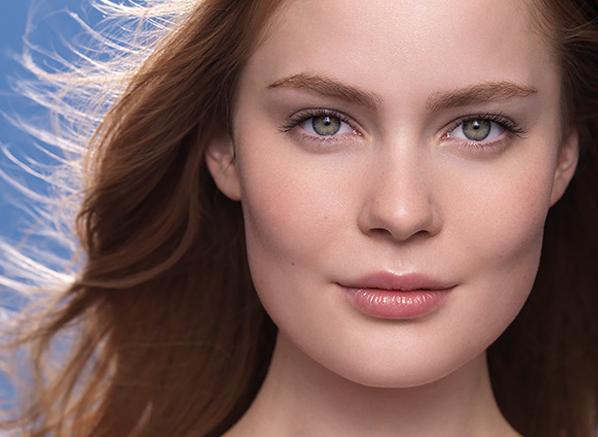Papulopustular Rosacea: Managing Acne-Like Breakouts
Papulopustular Rosacea Treatment in Dubai is a common but often misunderstood skin condition that primarily affects the face. It is characterized by persistent redness, swelling, and acne-like breakouts of papules (small red bumps) and pustules (pus-filled bumps). Although these symptoms resemble acne, rosacea is a distinct condition requiring a different approach to management. This article will explore what papulopustular rosacea is, the potential triggers, and effective strategies for managing it without costly treatments.
What is Papulopustular Rosacea?
Papulopustular rosacea is one of the four main subtypes of rosacea, often referred to as "acne rosacea." While it shares similarities with acne, the key difference is that rosacea doesn’t involve blackheads or whiteheads, which are hallmarks of traditional acne. The symptoms of papulopustular rosacea include:
- Red patches on the skin, typically on the face.
- Persistent acne-like breakouts (papules and pustules).
- Visible blood vessels or spider veins.
- Swelling and sensitivity around the affected areas.
- Episodes of intense flare-ups followed by remission.
Unlike acne, rosacea is more common in adults aged 30 to 50, particularly those with fair skin. The exact cause is still unclear, but several factors can trigger or worsen symptoms.

Common Triggers of Papulopustular Rosacea
Managing papulopustular rosacea often starts with identifying and avoiding specific triggers. These triggers vary from person to person, but some of the most common include:
1. Sun Exposure
Prolonged exposure to UV rays can aggravate rosacea symptoms by increasing skin inflammation and sensitivity. Wearing a high-SPF sunscreen or avoiding direct sunlight can significantly reduce flare-ups.
2. Hot or Cold Weather
Extremely hot or cold temperatures, as well as sudden changes in weather, can cause the blood vessels in the skin to dilate, leading to increased redness and breakouts.
3. Spicy Foods and Alcohol
Consuming spicy foods and drinking alcohol can trigger rosacea by causing a temporary increase in blood flow to the face. Alcohol, especially red wine, is a well-known trigger for many people with rosacea.
4. Stress
Emotional stress can cause your body to produce hormones that increase skin sensitivity and inflammation, leading to flare-ups.
5. Skin Care Products
Certain skincare products, particularly those containing harsh ingredients like alcohol, menthol, or fragrances, can irritate the skin and exacerbate symptoms.
6. Heat and Exercise
Excessive sweating from exercise or exposure to high temperatures (such as saunas) can also trigger rosacea. The dilation of blood vessels during these activities may cause the face to become flushed and inflamed.
Managing Papulopustular Rosacea Without Costly Treatments
While there is no cure for papulopustular rosacea, many people successfully manage their symptoms through lifestyle changes and affordable over-the-counter options. Below are some effective strategies for keeping breakouts under control.
1. Identify Your Triggers
Keeping a daily journal to track flare-ups and associated activities or environmental factors can help you identify what triggers your rosacea. Once identified, taking steps to avoid these triggers can prevent frequent breakouts.
2. Use Gentle Skin Care
One of the keys to managing rosacea is to keep the skin barrier healthy. Use mild, fragrance-free cleansers and moisturizers specifically designed for sensitive skin. Avoid scrubbing or using exfoliants, as this can aggravate the condition.
3. Sunscreen is Your Best Friend
Sunscreen is vital for protecting your skin from the damaging effects of the sun. Choose a broad-spectrum, non-comedogenic sunscreen with an SPF of at least 30. Mineral-based sunscreens containing zinc oxide or titanium dioxide are often gentler on rosacea-prone skin.
4. Cold Compresses
Applying a cold compress can soothe inflamed skin and reduce redness. This simple home remedy helps constrict blood vessels, minimizing the flushing that often accompanies rosacea.
5. Dietary Modifications
As mentioned earlier, spicy foods and alcohol are common triggers. Reducing or eliminating these from your diet can lead to significant improvement in symptoms. In addition, incorporating anti-inflammatory foods such as omega-3-rich fish, leafy greens, and berries may help reduce overall skin inflammation.
6. Aloe Vera and Green Tea
Natural remedies like aloe vera and green tea have anti-inflammatory properties that can calm irritated skin. Aloe vera gel can be applied topically to soothe redness, while green tea extract or tea bags cooled and placed on the skin can help reduce puffiness and inflammation.
7. Control Stress
Managing stress through relaxation techniques like meditation, yoga, or breathing exercises can prevent flare-ups. Reducing stress can help stabilize hormone levels that may otherwise trigger inflammation.
8. OTC Treatments
Although some prescription treatments can be costly, there are affordable over-the-counter options available. Look for creams or lotions containing ingredients like niacinamide, which has anti-inflammatory properties, or azelaic acid, which can reduce bumps and redness. Be sure to consult with a dermatologist before trying any new products to ensure they are suitable for your skin.
When to See a Dermatologist
While the above strategies can help manage mild cases of papulopustular rosacea, some individuals may need medical intervention. If your symptoms worsen or don’t respond to at-home treatments, it’s important to consult with a dermatologist. Prescription treatments such as topical antibiotics, oral medications, or light therapy may be necessary in severe cases.
Signs You May Need Professional Help:
- The condition persists or worsens despite home management.
- You notice thickening of the skin, especially around the nose (a condition called rhinophyma).
- The presence of eye-related symptoms like dryness, irritation, or vision issues (ocular rosacea).
Conclusion
Managing papulopustular rosacea may seem challenging, especially since the symptoms can mimic acne. However, by understanding the triggers and making targeted lifestyle adjustments, you can significantly reduce flare-ups without resorting to expensive treatments. Consistent skincare, sun protection, and trigger avoidance are crucial in managing this condition. If needed, affordable over-the-counter treatments and natural remedies can provide relief. Always seek professional advice if your symptoms worsen or don't respond to these measures.
Rosacea doesn’t have to control your life—with the right approach, you can manage it effectively and maintain healthy, glowing skin.
